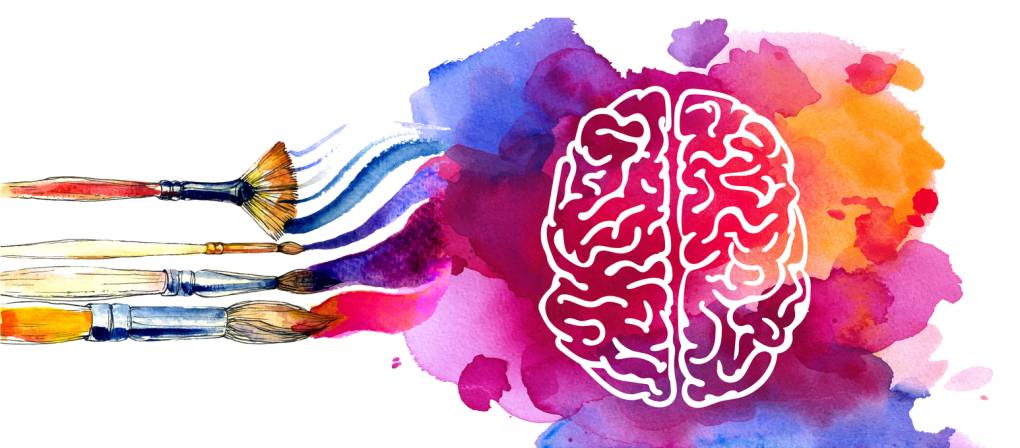Art enhances the ability of the hippocampus and the other areas of your brain to perform the tasks that they were designed to do by increasing the synaptic circuits. This helps not only in the playing of music but in any life activity where learning and memory are needed.
In other words: Practicing music increases synapses and gray matter. The results of the study correlate with the findings in the YOLA study in Los Angeles. The researcher found that children receiving music instruction had changes in the size of the brain regions that are engaged in processing sound. It got bigger. And “the young musicians also showed a stronger connectivity in the corpus callosum, an area that allows communication between the two hemispheres of the brain,” according to the findings.
These neurological benefits extend beyond music. The National Endowment for the Arts, NEA, has been studying and supporting studies that examine the effect that the arts have on young brains for decades, offering insight into how the arts support emotional resilience in children and adolescents as they learn.
In 2015, Melissa Menzer, a program analyst in the Office of Research and Analysis at the NEA, performed a literature review focused on the social and emotional benefits of arts participation during early childhood. A literature review is when an investigator gathers and synthesizes the published studies and data from other researchers in order to identify what can be gleaned from the full body of work.
Menzer was specifically interested in studies focused on the social and emotional benefits of arts participation in early childhood, including music-based activities like singing, playing musical instruments, dancing, drama/theatre, and the visual arts and crafts.
Included in that literature review was a reference to a 2011 NEA report indicating that “in study after study, arts participation and arts education have been associated with improved cognitive, social, and behavioral outcomes in individuals across the lifespan, in early childhood, in adolescence and young adulthood, and in later years.”
Children who regularly participated in dance classes had increased those mood-boosting neurochemicals we’ve mentioned, which resulted in social-emotional, physiological, and cognitive development, but it also offered a path for safe exploration and expression of feelings and emotions. It also helps to build strong spatial cognition in children, which has been associated with increased skills in math, science, and technology later in life. And perhaps most vital for childhood development, Menzer found a research study indicating that children who regularly attend a dance group develop stronger prosocial behavior, like cooperation, while overcoming anxious and aggressive behaviors, when compared with kids who didn’t dance.
The 2015 NEA literature review also found that when kids are engaged in the arts in the pivotal age range of 0–8, they were better able to collaborate with peers and communicate with parents and teachers. The studies cited in the literature review reflect similar results that other researchers are finding when studying El Sistema students.
Other studies of arts in education over the years have proven that students involved in arts are good academically. Students with access to arts education are five times less likely to drop out of school and four times more likely to be recognized for high achievement. They score higher on the SAT, and on proficiency tests of literacy, writing, and English skills. They are also less likely to have disciplinary infractions. And when arts education is equitable so that all kids have equal access, the learning gap between low- and high-income students begins to shrink.
One word you’ll often hear in research and education circles is “transfer.” It refers to the way that one skill — learning an instrument, for instance, or engaging in the act of painting or drawing — transfers over into other aspects of our lives.
In 2007, psychologist Ellen Winner and professor Lois Hetland, chair of art education at Massachusetts College of Art and Design and a senior research affiliate in the Harvard Graduate School of Education, were two of the first to study the ways in which learning an art translates into other life skills. Hetland and Winner developed a qualitative ethnographic meta-analysis of skills being learned, specifically through the visual arts. Beyond improving the skill of the art form being taught, they wanted to quantify what else individuals were learning in the process.
They concluded in their book, Studio Thinking: The Real Benefits of Visual Arts Education, that, through the visual arts, individuals were taught to observe and see with acuity; to envision by creating mental images and using their imagination; to express themselves and find their individual voice; to reflect about decisions and make critical and evaluative judgments; to engage and persist, by working even through frustration; and to explore and take risks and profit from their mistakes.
Ivy Ross is the Vice President of Design for Hardware Products at Google, where she leads a team that has created over 50 products, winning over 225 design awards. An artist with work in over 10 international museums, Ivy is also a National Endowment for Arts grant recipient and was ninth on Fast Company’s list of the 100 most creative people in business in 2019.
 Susan Magsamen is the Founder and Director of the International Arts + Mind Lab Center for Applied Neuroaesthetics at the Pedersen Brain Science Institute of the Johns Hopkins University School of Medicine, where she is a faculty member in the department of neurology. She is also the Co-Director of the NeuroArts Blueprint with Aspen Institute.
Susan Magsamen is the Founder and Director of the International Arts + Mind Lab Center for Applied Neuroaesthetics at the Pedersen Brain Science Institute of the Johns Hopkins University School of Medicine, where she is a faculty member in the department of neurology. She is also the Co-Director of the NeuroArts Blueprint with Aspen Institute.

